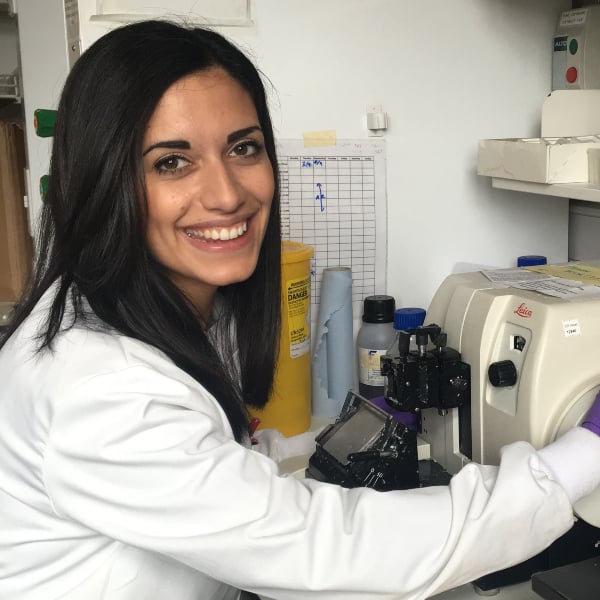Functional Imaging Group
Professor Christina Messiou's group are advancing innovative imaging techniques for patient benefit.
We are investigating how whole body MRI biomarkers can be integrated into models of risk to inform clinical decision-making and precision medicine
Professor Christina Messiou
Honorary Faculty:
Functional Imaging
Professor Christina Messiou is an Oncology Radiologist specialising in the imaging of myeloma, melanoma and soft tissue sarcoma. She is driving forward innovative imaging for the benefit of patients.
Researchers in this group
 .
.
Email: [email protected]
Location: Sutton
I am currently working on utilising radiogenomics to understand heterogeneity and therapy response in soft tissue sarcoma, and whether combining imaging and molecular data can improve patient outcomes.
Professor Christina Messiou's group have written 198 publications
Most recent new publication 6/2025
See all their publicationsImage guided Theranostics in Multiple Myeloma (iTIMM)
We have demonstrated that whole body diffusion weighted magnetic resonance imaging (MRI) is an extremely sensitive tool for detecting disease within the bone marrow. In addition our previous studies have shown the capability for whole skeleton quantitative measurements of disease burden and response to treatment (Figure 1, right).
The iTIMM study is investigating the potential of whole body diffusion weighted MRI for detection of minimal residual disease following autograft with a view to using this imaging to guide adaptive treatment regimens.
We will also explore the relationships between quantitative measures of disease phenotype, burden and response with outcomes and standard measures of risk such as cytogenetics.
Pre-operative Imaging in Retroperitoneal Sarcomas (PIRS)
This is a prospective multiparametric MRI study of tumour heterogeneity. We are establishing reproducibility of functional MRI parameters and defining their relationships to histology.
Understanding which parameters are robust and reflect aggressiveness allows three-dimensional maps of tumour heterogeneity to be built using supervised machine learning techniques for local treatment planning and response assessment. For patients who have undergone radiotherapy we are investigating the interaction between functional MRI parameters to produce quantitative and visual tools which reflect heterogeneous response. This study will open up new opportunities for image guided adaptive therapy and has been performed in close collaboration with the soft tissue sarcoma unit at The Royal Marsden NHS Foundation Trust.
Whole-body diffusion weighted magnetic resonance imaging (MRI) has provided novel insight into myeloma bone disease which includes early detection, greater understanding of heterogeneity and non-invasive assessment of response to treatment, anatomy and pace of disease. Using advanced complimentary technologies such as machine learning and radiomics we hope to be able to develop a pipeline to transform these large datasets into meaningful metrics of phenotype, burden and response.
In collaboration with the Myeloma Group we are investigating how whole body MRI biomarkers can be integrated into models of risk to inform clinical decision-making and precision medicine. We have initiated collaborations with several European partners to work towards standardised protocols and analysis tools to facilitate multicentre collaborations and data sharing initiatives.
Our studies of multiparametric MRI of soft tissue sarcoma have provided an invaluable platform for understanding the relationship between functional MRI parameters and histology and have facilitated development of tumour segmentation tools which are based on biologically relevant parameters.
We are developing visual and quantitative maps from MRI data to identify aggressive regions and assess treatment response independent of changes in lesion size (collaboration with Jessica Winfield and Mathew Blackledge, MRI physics) (Figure 1, below). This will facilitate localised treatment planning and response assessment in heterogeneous tumours. We are part of an international collaboration of sarcoma units across Europe and North America and have led and collaborated on several consensus documents.
 .
.